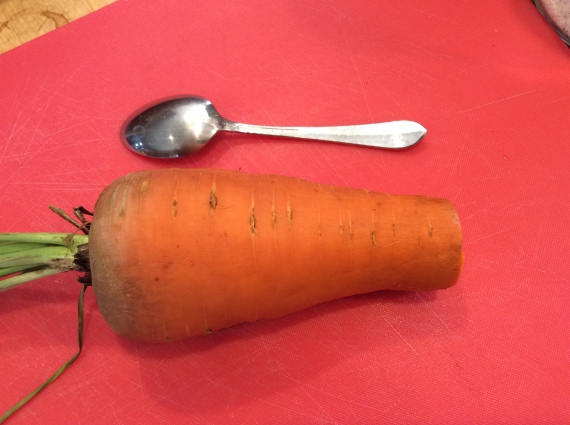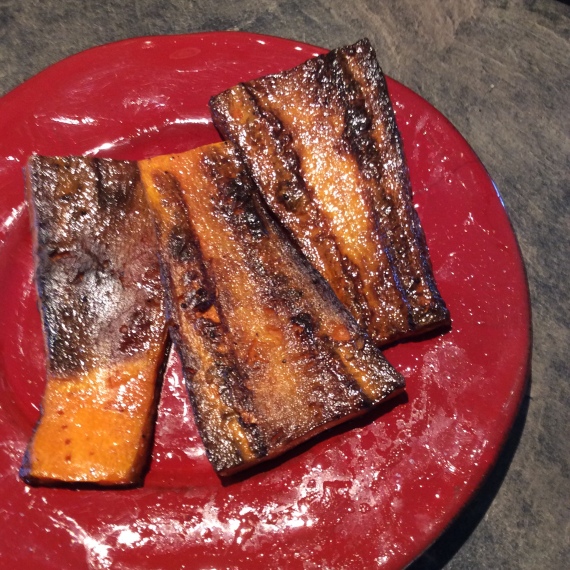A few days ago I wrote at some length about purple carrots and you can find that post here.
Today I want to talk about the common orange carrot which I also grow, for its vivid color on winter plates as well as flavor and nutritional value.

I don’t grow the tiny baby carrots. My preference is for the immense Chanteney-style variety Autumn King. I plant them at some point in May and let them grow all summer. By late fall they have reached the proportions shown. They are very tender and flavorful as long as they get enough regular watering during the growing season. I store them for winter by doing exactly nothing. They stay right where they grew. This works because this variety is quite hardy and because I live in a relatively mild climate where the ground doesn’t freeze more than an inch or so deep, and I can break the frozen ground with a shovel when I want to harvest. Dig up at will, scrub, and eat. In colder climates further protection would have to be given. I would experiment with putting straw bales a layer or two deep over and around the carrot bed rather than fuss with a root cellar. Readers in colder climates, please let us know what methods you like

For cooking, I’m very fond of the carrot steak method that I wrote about yesterday as well as other, more conventional methods. The immense Autumn King can be sliced into carrot steaks that are about the size of porterhouses. They can be seasoned in a lot of different ways. My default seasoning is olive oil and salt for the grilling or pan-grilling, then a glaze of thyme butter before eating. It has recently occurred to me, though, that Carrot Steak Tandoori could be really wonderful. The only carrot dishes that I really dislike are those that are sweetened. Carrots are loaded with natural sugar and don’t need any added. Just let them shine.
If there are leftovers, carrot steaks are wonderful brought to room temperature, sliced into julienne, and dressed with a good vinaigrette.
I have often read that carrots left in the ground become woody. I have found this to be true only if they are left there until they resprout in the spring. So any carrots that are left when new tall green fronds start to emerge go to my goat and not to my kitchen. She couldn’t be happier. If you are goatless, chickens will scarf up carrots if they are chopped up finely in the Cuisinart. A carrot is also a necessary ingredient in the broth pot and woody cores don’t matter in that context.



